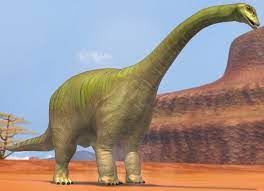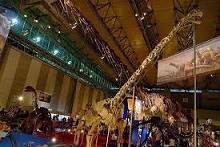
Phuwiangosaurus is a genus of sauropod dinosaur that lived during the Early Cretaceous period, approximately 130 million years ago. It was a massive, long-necked, herbivorous dinosaur that belongs to the family of dinosaurs known as Titanosauridae.
The story of Phuwiangosaurus begins with its discovery in the early 1980s. The name Phuwiangosaurus is a nod to its origins, combining Phu Wiang, the district where its fossils were found, with saurus meaning lizard. These fossils, though partial, revealed a dinosaur of immense proportions and offered a tantalizing glimpse into the ancient past.
| Name: | Phuwiangosaurus dinosaurs |
| Size: | Around 25 meters (82 feet) in length. |
| Main Facts: | Phuwiangosaurus an Early Cretaceous titan, was among Earth's largest terrestrial herbivores, a testament to the awe-inspiring scale of prehistoric life. |
Phuwiangosaurus belonged to the sauropod family, specifically to the Titanosauridae group within Sauropoda. These dinosaurs were among the largest terrestrial animals to have ever existed. Their imposing size, coupled with their herbivorous diet, left an indelible mark on the ecosystems of the Mesozoic era.

During the Early Cretaceous, when Phuwiangosaurus roamed, the region that is now Thailand was quite different from its present-day landscape. It was part of the supercontinent Gondwana and was characterized by lush, tropical vegetation and a warm climate. These conditions were ideal for the proliferation of massive herbivorous dinosaurs like Phuwiangosaurus.
As is often the case with ancient creatures, the fossil record of Phuwiangosaurus is incomplete. Researchers have uncovered partial remains, including vertebrae, limb bones, and other skeletal elements. These fragments, although limited, have provided invaluable insights into the dinosaur's size, anatomy, and likely behaviors.
Phuwiangosaurus is just one of many sauropod dinosaurs that lived during the Mesozoic era. Its discovery highlights the remarkable diversity within this group. Sauropods came in various shapes and sizes, from relatively small forms to colossal giants like Phuwiangosaurus.
Phuwiangosaurus was a gigantic dinosaur, estimated to have reached lengths of up to 25 meters (about 82 feet) or more. Like other sauropods, it had a long neck and tail, a small head, and walked on all fours. Its immense size would have allowed it to consume vast quantities of vegetation to sustain its massive body.
While the fossil record of Phuwiangosaurus is limited, its discovery has contributed to our understanding of the diversity of sauropod dinosaurs during the Early Cretaceous and their distribution across different parts of the world. It serves as a reminder of the awe-inspiring scale of prehistoric life on Earth.
Phuwiangosaurus, as an immense sauropod, shares its colossal size with other members of its group, such as Argentinosaurus and Dreadnoughtus. Its long neck and tail, small head, and quadrupedal stance are characteristic of sauropods.
Like many other sauropods, Phuwiangosaurus was an herbivore. It consumed vast quantities of plant material, utilizing its long neck to reach high vegetation. Comparisons can be drawn with other herbivorous giants like Brachiosaurus and Apatosaurus.
Phuwiangosaurus represents the astounding diversity within sauropods. It differs significantly from other sauropods, such as the long-necked Diplodocus or the unique-shaped Amargasaurus.
While many sauropods were discovered in regions like North America and South America, Phuwiangosaurus' fossils were found in Thailand, illustrating the global distribution of these massive herbivores.
Phuwiangosaurus lived during the Early Cretaceous, a period when various other dinosaurs thrived, such as the horned dinosaurs like Triceratops and the early relatives of Tyrannosaurus rex.
Phuwiangosaurus offers insights into the ecosystems of Early Cretaceous Southeast Asia. Comparisons can be drawn to the flora and fauna of contemporaneous regions worldwide to understand global paleoecology.
Ions for its herbivorous lifestyle, such as its large body, long neck, and pillar-like limbs, align with those of other sauropods, showcasing the convergent evolution of similar traits for feeding and survival
Just like many other dinosaurs, there are still mysteries surrounding Phuwiangosaurus. Ongoing research continues to unveil more about its biology, behavior, and the dynamics of its ancient environment.